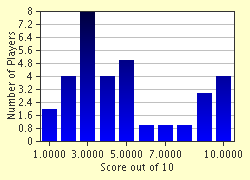Quiz Answer Key and Fun Facts
1. Titan, Saturn's largest moon and second largest in the solar system, was discovered in 1655 by Dutch astronomer Christiaan Huygens. Just as with Earth, Titan's atmosphere is mostly comprised of which gas?
2. The second of Saturn's moons to be discovered (in 1671) is named for the Titan Iapetus, who was the father of Atlas, Prometheus, Epimetheus and Menoetius. Who discovered it (and the next three moons)?
3. Discovered in 1672, Saturn's second largest moon is named for the Titaness Rhea, the 'mother of the gods'. Does Rhea have a retrograde (in the opposite direction of the planet's rotation) orbit?
4. Tethys and Dione were discovered together in 1684, bringing the total number of known moons up to five. Along with Iapetus and Rhea, what title was given to this group of four moons, in honour of King Louis XIV?
5. Dione also happens to share a 2:1 orbital resonance with the sixth moon to be discovered orbiting Saturn. Named for a Giant in Greek mythology, what is this moon, discovered in 1789, called?
6. The seventh moon to be discovered around Saturn was observed just two weeks after its 'brother'. The innermost of the seven moons discovered (to that time), what Giant's name does it hold?
7. The sixth and seventh moons of Saturn were both discovered by the same man, also known for his discovery of the planet Uranus. Who was he?
8. Hyperion was the eighth moon of Saturn to be discovered, and the first moon anywhere found not to be round in shape. Which of these astronomers did NOT share in its discovery in 1848?
9. William Henry Pickering discovered Saturn's ninth moon in 1899. What was different about Phoebe's discovery, compared to the previous eight?
10. In 1847, the names for the first seven moons of Saturn were suggested by astronomer, mathematician and inventor John Herschel. He chose Titans and Giants of Greek mythology because Saturn is the Roman version of which Greek Titan who overthrew his father Uranus to rule?
Source: Author
reedy
This quiz was reviewed by FunTrivia editor
rossian before going online.
Any errors found in FunTrivia content are routinely corrected through our feedback system.

